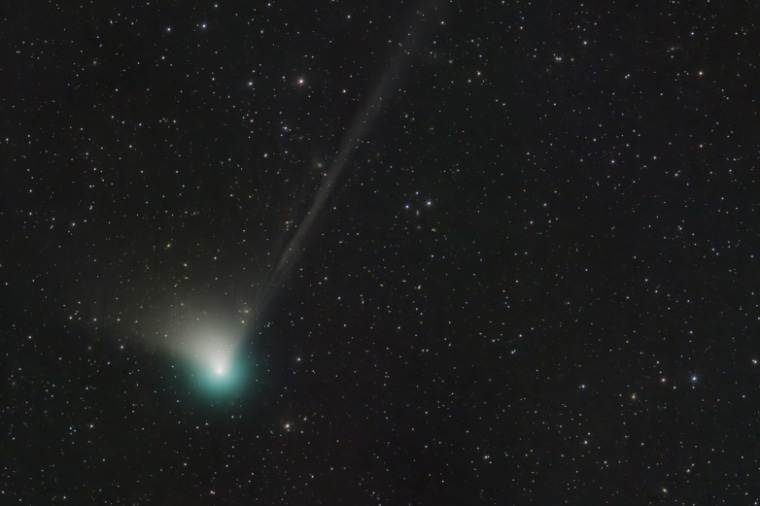A comet from the outer solar system is set to buzz Earth on Wednesday and skywatchers have a chance to glimpse the celestial object as it journeys through our cosmic neighborhood for the first time in 50,000 years.
The flyby is a once-in-a-lifetime chance to see the "green comet," which poses no risk to the planet, before it continues on its far-flung orbit around the sun.
The comet, officially known as C/2022 E3 (ZTF), will make its closest approach to the Earth on Wednesday and could be bright enough to be seen through telescopes and binoculars if conditions are clear.
At its closest approach, the comet will come within 26 million miles of the planet, according to the Adler Planetarium. The last time Comet C/2022 E3 (ZTF) visited Earth was in the Upper Paleolithic era, during the time of the Neanderthals.
Comets can be tricky to spot in the night sky, but this cosmic interloper has been steadily brightening as it moves through the inner solar system, which should help people catch a glimpse, according to NASA.
Astronomers have been tracking the comet as it approaches, and skywatchers in the Northern Hemisphere have had chances to spot the cosmic visitor on clear nights throughout most of January. The comet previously made its closest approach to the sun on Jan. 12.
To see the comet as it nears Earth, people in the Northern Hemisphere should stake out a spot before dawn looking toward the northeastern horizon, according to EarthSky, a website devoted to skywatching and astronomy. Since the moon will be bright in the night sky in late January and early February, the best time to try to spot the comet will be after the moon drops below the horizon, in the hours before dawn.
Skywatchers in the Southern Hemisphere likely won't have a good view of the comet, according to EarthSky.
With binoculars, the comet may appear as a faint green glow in the sky. The emerald hue comes from the presence of carbon in the cloud of gas that surrounds the comet's nucleus.
If the comet continues brightening, it may be possible to see it with the naked eye as it makes its closest approach to Earth, though binoculars and telescopes will likely be able to spy finer details of the comet, possibly including part of its faint tail.
For those unable to see the green comet in person, however, the Virtual Telescope Project is planning to broadcast real-time views from robotically controlled telescopes in Italy and Spain, beginning Wednesday (Feb. 1) at 11 p.m. ET.
After this, the next opportunity to see Comet C/2022 E3 (ZTF) won't come around for a long, long time. This icy body has a long orbit that takes it on a journey around the sun and far into the outer solar system over thousands of years.
Comet C/2022 E3 (ZTF) was discovered last March by astronomers using the Zwicky Transient Facility's wide-field survey camera at the Palomar Observatory, north of San Diego.

